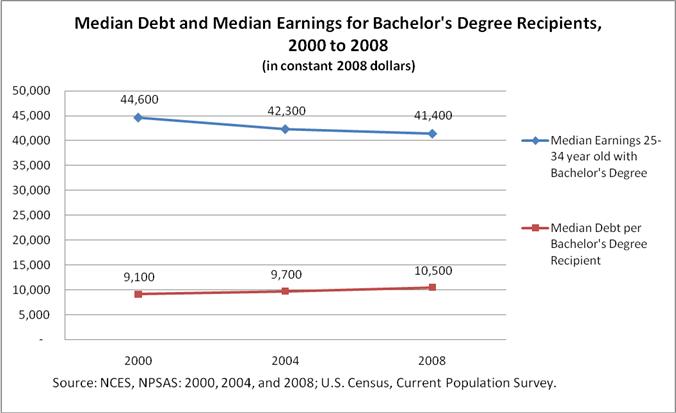College loan repayment data released late Friday by the U.S. Department of Education show that some of the largest proprietary colleges face the possibility of being barred from the federal student aid program, at least at some of their campuses.
Under a proposed new regulation, proprietary schools would have to show that 45 percent of those who used federal loans to attend their colleges are repaying the money, in order for the schools to remain in the aid programs. The data were released to show various institutions how they might fare under the new regulations.
The statistics show that Kaplan University, owned by the Washington Post Co., has a weighted overall repayment rate of just 29 percent and that Strayer University has a weighted repayment rate of only 24 percent. Although a few individual campuses for both of the proprietary chains reached the 45 percent repayment level, most of the campuses fell short.
In contrast, the University of Phoenix, the largest proprietary chain, has a weighted overall average of 44 percent, with many of its various locations above the 45 percent level.
American Public University has a weighted average of 47 percent.
All of the above colleges are publicly traded. Bloomberg News reported that an index of 12 such education stocks fell 6 percent today. Stocks for Corinthian Colleges sank 20 percent after its Everest campuses showed repayment rates only in the teens. However, its Wyotech campuses have a weighted average of 46 percent and the three locations of its Heald College came in at 58 percent, 35 percent and 40 percent.
Repayments levels for some of the other publicly traded companies were: 40 percent for Capella University, 38 percent for Education Management’s Argosy University and 45 percent for Bridgepoint’s Ashford University.
Overall, proprietary colleges had a repayment rate of 36 percent, compared with 56 percent at private nonprofit universities and 54 percent for public institutions, according to the Education Department.
Strayer released a statement challenging the Education Department’s data, arguing that its internal data showed a repayment rate of more than 55 percent. The Washington Post Co., for which Kaplan is the biggest single revenue source, warned investors that earnings could be affected by the new rules.
Several of the publicly traded companies said the Education Department’s numbers are skewed because they do not include students who have consolidated several loans or who are paying only the interest on their loans.
When the 45 percent repayment level was announced as the minimum for participation in federal financial aid programs, Sen. Tom Harkin (D-Iowa), who has been investigating proprietary colleges, said he believed that repayment level was too low. At the same time, the Career College Association, which represents many proprietary schools, criticized it as being too high.
The data released by the Education Department included the median federal debt for students from each college at the time the students began repaying (either because they graduated or dropped out). Generally, medical schools had the highest median debt, with the New York Institute of Technology, Osteopathic Medicine school coming in the highest at $113,771.
The University of Phoenix, which has been criticized for luring too many students who aren’t equipped for its programs and leaving them with huge debts, had a median student debt of $14,299. Kaplan had a median debt of $8,685 and Strayer had a median student debt of $9,225.
Click here to see all the repayment numbers. (Click on “Cumulative Four-Year Repayment Rate by Institution.”)
Argosy, owned by Education Management and which offers various courses ranging from business administration to various health-related jobs (though not medical or nursing degrees), had a median student debt of $37,137, according to the statistics.






























